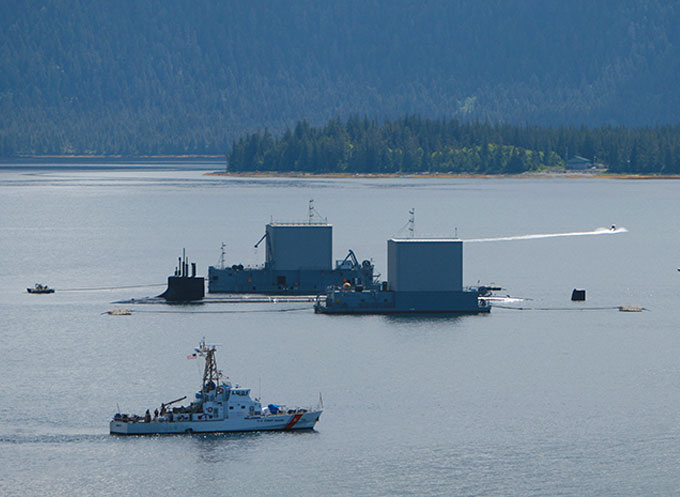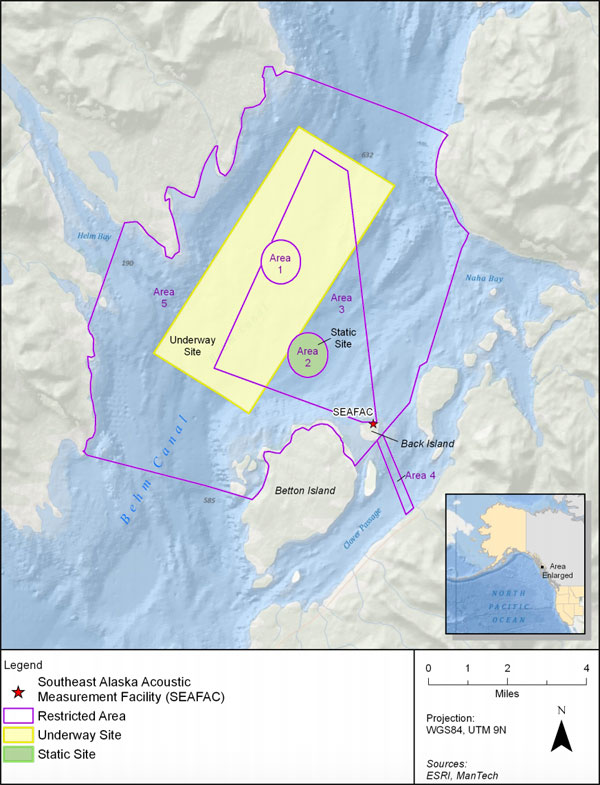
Leidos, has been awarded a prime contract by the Naval Surface Warfare Center Carderock Division (NSWCCD) to support the Southeast Alaska Measurement Facility (SEAFAC) signature silencing program.

NSWCCD provides support for technical products over a wide range of scientific areas related to surface and undersea platforms including maritime science and technology.
SEAFAC is the Navy’s only West Coast asset for making high fidelity passive acoustic signature measurements. SEAFAC includes directive line arrays, data collection and processing systems for real-time data analysis and signature evaluation.
As the Navy’s primary acoustic engineering measurement facility in the Pacific, SEAFAC provides the capability to perform evaluations to determine the sources of radiated acoustic noise, to assess vulnerability, and to develop quieting measures.
(Learn More about how submarines avoid detection. Courtesy of ODN and YouTube)
Located in Behm Canal near Ketchikan, Alaska, the facility provides an ideal ship acoustic measurement site characterized by low ambient noise and minimal noise interference.
SEAFAC supports submarine operations over a full range of speeds and depths required for underway tests during acoustic trials, and is also capable of supporting submarine target strength measurements.

major components in Western Behm Canal: the Underway Measurement Site, the
Static Site, and the Back Island Operations Center and supporting facilities. (Image courtesy of NSWCCD)
The facility consists of a site to collect acoustic signatures of submerged submarines underway, and a unique site to measure acoustic signatures of motionless (static) submerged submarines with various onboard machinery secured or under unloaded operation.
Acoustic signatures can be collected for a variety of speeds and operating conditions as the submarine transits back and forth between the dual bottom-mounted acoustic arrays.
- At the static site, suspension barges lower the submarine on cables and position it between measurement arrays to evaluate acoustic signatures of individual machinery components.
- The Static Site can test vessels of all sizes and types moored or suspended between surface barges.
- Submarines for example are suspended at various depths from the surface barges between two underwater arrays and the ship’s propulsion systems are secured.
- Surface ships could be put on shore power with ship power and propulsion systems secured.
- Test personnel then obtain unique measurements on individual pieces of equipment and machinery.
- The signal processing and in-water hardware were designed to easily accommodate a variety of sponsors and requirements.
Click to view SEAFAC fact sheet on public safety measures
Leidos has supported SEAFAC for more than 20 years with expertise in submarine acoustics, civil, naval, architecture, ocean, mechanical, electrical, and electronic engineering, program management, and complex logistics in remote locations.

“We look forward to continuing to provide innovative logistics, maintenance and operations expertise to ensure SEAFAC is able to maintain a technical advantage in undersea systems,” said Leidos Group President Mike Chagnon.
Under the new contract, Leidos will continue to provide logistics, maintenance, operations, and program management assistance services in support of Navy and Marine signature silencing programs for naval ships and undersea systems.
Leidos supports the operations and maintenance of SEAFAC during and between acoustic trials, including the operation, maintenance, and repair of all SEAFAC assets and support systems, as well as provide communications and emergency services.
 The single-award, cost-plus fixed-fee, indefinite-delivery/indefinite-quantity contract has a five year period of performance and a total contract value of approximately $42 million.
The single-award, cost-plus fixed-fee, indefinite-delivery/indefinite-quantity contract has a five year period of performance and a total contract value of approximately $42 million.
Work will be performed primarily in Ketchikan, Alaska, and Poulsbo, Wash.
















